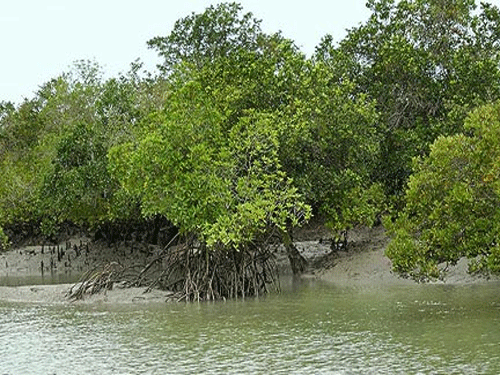
The National Green Tribunal has directed the West Bengal government to demolish illegal constructions coming up in the Sunderbans, habitat of the Royal Bengal tigers and the world's largest mangrove forest.
The tribunal's East Zone bench directed the state to demolish such structures, even if any of these were allowed by statutory bodies, and submit a report to it after six weeks.
It took up suo motu proceedings based on reports of degradation of the tiger and several other flora and fauna habitat, which was also very important for maintaining ecological balance in the region.
Though tiger population in the Sunderbans has been found to be stable in the latest census report released on Wednesday, the tribunal incidentally on the same day came down heavily on the degradation of the forest due to human encroachment in different forms.
The tribunal's East Zone bench directed the state Chief Secretary to demolish all unauthorised structures, encroachments on rivers and river banks and illegally constructed embankments and dykes.
The East Zone bench, comprising Justice (retd) Pratap Roy and Professor P C Mishra, also directed that tiger prawn farming and illegal pisciculture in the mangrove, crisscrossed by a large number of rivers and canals, has to be stopped.
The bench, which had appointed environment activist Subhas Datta as amicus curae, noted from his report that several illegal brick kilns have come up within the reserve and directed that these have to go immediately.
It also directed the Chief Secretary to constitute a committee to monitor such activities in the Sunderbans and to ensure stoppage of all illegal activities there, which could cause environmental degradation.
The committee would submit a progress report after six weeks and thereafter once every month.
While the tiger count in the country had risen by 30 per cent with the Western Ghats zone witnessing a steady increase, the number of big cats in the Sunderbans has remained almost the same and was estimated to be about 76 tigers.
Datta told the tribunal that different government agencies active in the region were working at cross purposes and were negatively affecting the conservation of forest and the flora and fauna.
Datta submitted in his report several pictures of illegal constructions within the reserve in the coastal area, which falls under the Coastal Regulatory Zone-I, within which no permanent constructions were allowed.
"These include some by statutory bodies, one being a building constructed by the Zilla Parishad for housing a tourist lodge," Datta said, noting in his report the lack of any master plan for conservation of this ecologically vulnerable region.
"In the name of tourism development, a number of privately operated hotels and lodges have also come up in the area, seriously affecting the ecological balance," Datta said.
The bench also noted there was lack of coordination among different government agencies leading to severe damage to the mangrove.